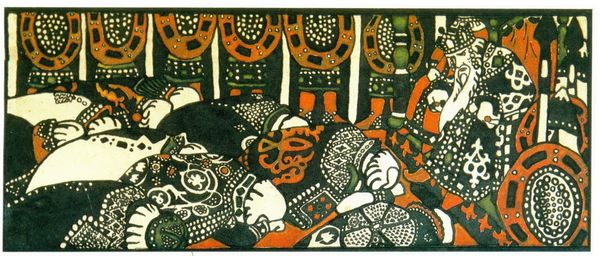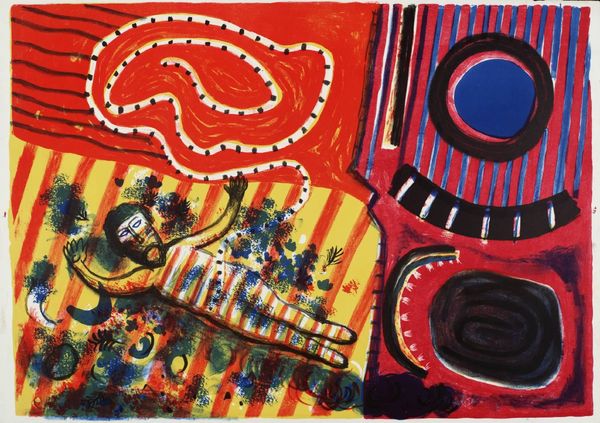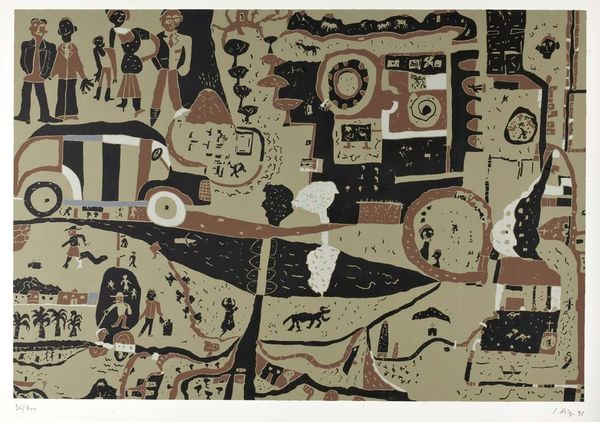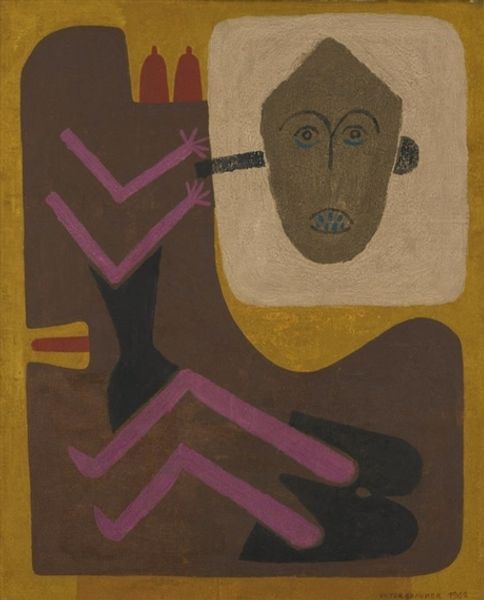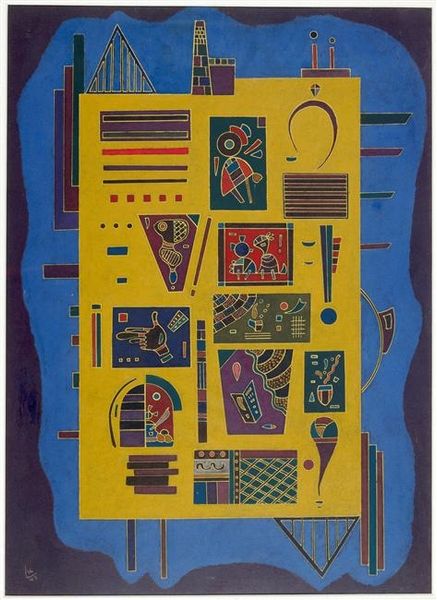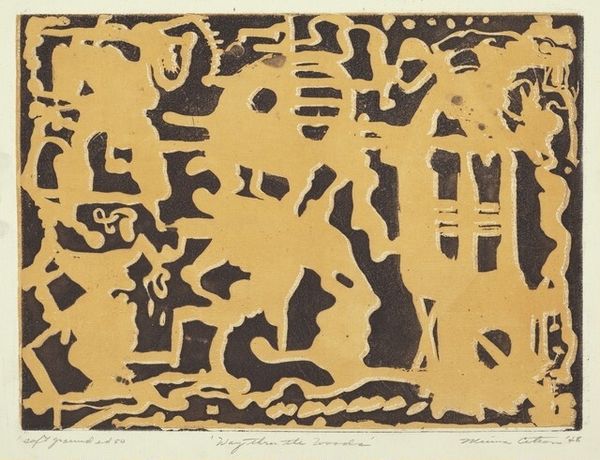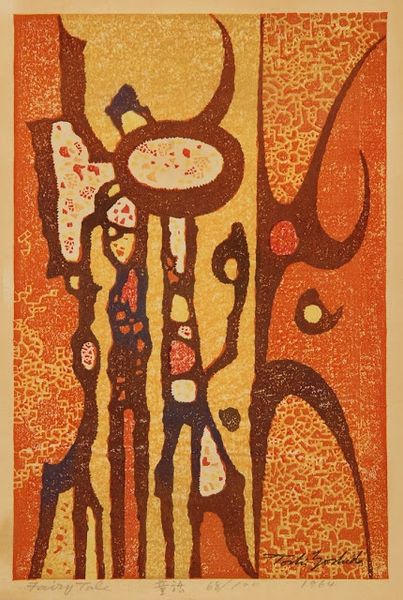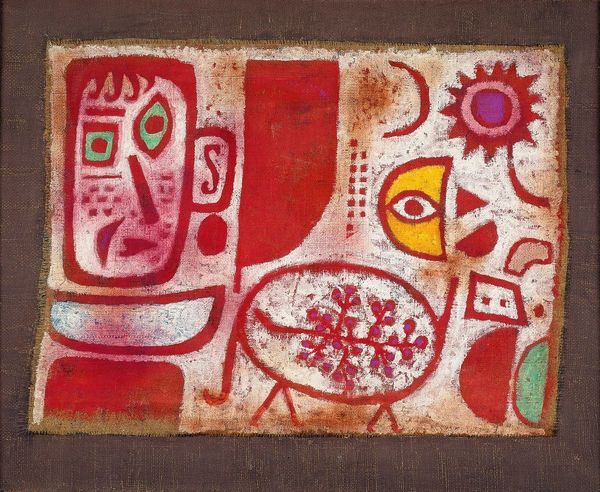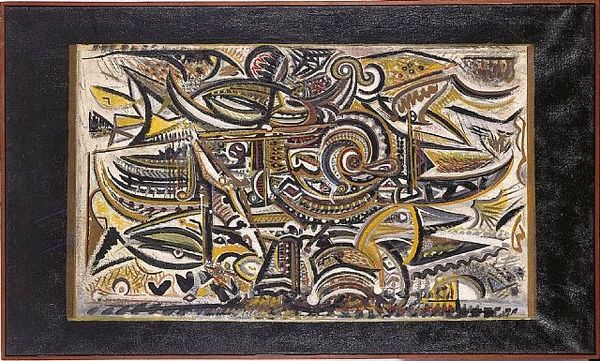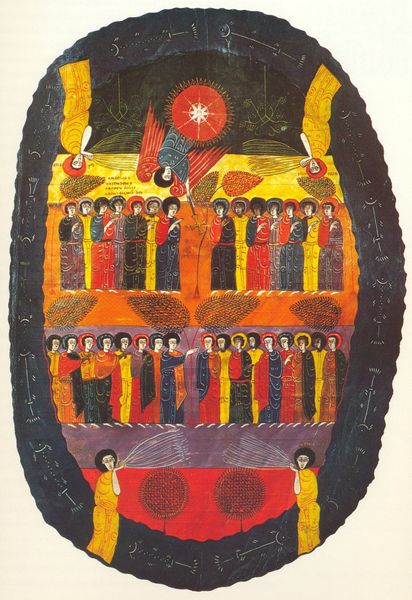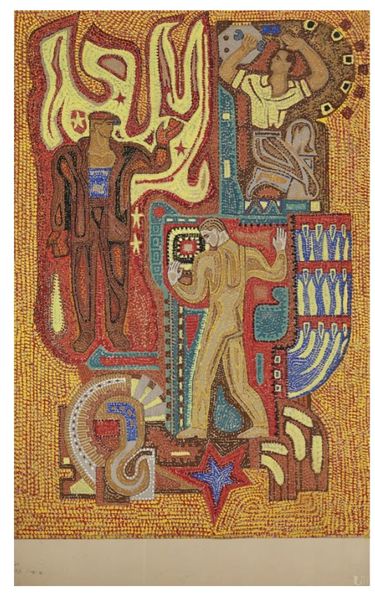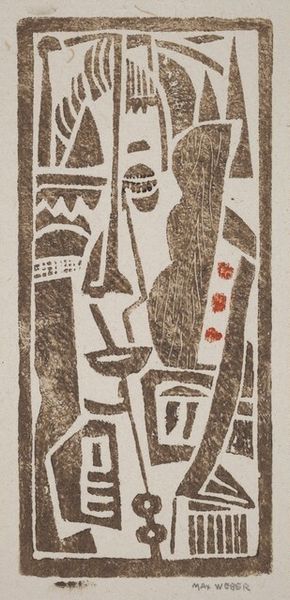
print, woodcut
# print
#
abstract
#
abstract pattern
#
geometric
#
woodcut
#
modernism
Dimensions: image: 22.5 × 26.6 cm (8 7/8 × 10 1/2 in.) sheet: 28 × 32.4 cm (11 × 12 3/4 in.)
Copyright: National Gallery of Art: CC0 1.0
Curator: Alright, let's delve into this intriguing piece titled "Indian Motif" crafted by Abraham P. Hankins in 1945. It's a woodcut print displaying elements of modernism. My initial impression focuses on its surprising flatness despite the complexity of shapes. What grabs your attention right away? Editor: I’m immediately struck by the bold shapes and earthy color palette. There is this striking flatness you mention, like stacked visual ideas fighting for prominence on one visual plane. But let’s talk about the “Indian Motif” element... Do you think Hankins was trying to tap into an ideal of Indigenous culture, or more likely, co-opting it for a Modernist aesthetic? Curator: It’s tough to say definitively without delving deeper into Hankins's background. The 1940s was a period marked by increasing social consciousness, alongside the rise of the abstract and Modernism's growing embrace of primitivism. I believe it’s more likely Hankins was drawing upon this broad "exotic" theme prevalent in those years, albeit filtered through his artistic lens, revealing a nuanced take of cultural fascination, perhaps tinged with misinterpretation. How would you see his handling of material, his application of modernist principles in that context? Editor: Looking at the print itself, the woodcut medium brings such beautiful texture, the slightly uneven inking, with some areas heavier, and others letting more of the paper through, brings a feeling of crafted object. Compositionally, you've got this all-over design, so there’s no single focal point. These visual motifs are carefully calibrated for their design—note that he's less invested in literal translation. What’s more, he seems preoccupied with purely formal aspects of his art making: balance, contrast, color harmonies within the visual field. Curator: Indeed. By titling it "Indian Motif," Hankins places this work in conversation with ongoing issues, which can spark important debates. The role of cultural representation, who gets to represent whom, and how is Modernism contributing or not contributing to a wider dialogue... Those considerations open rich interpretative avenues. Editor: Agreed. I would like to reiterate that while cultural interpretation is extremely relevant, we also have to consider the semiotic and compositional makeup that ultimately produces visual enjoyment. All of these perspectives work together to create an ultimate aesthetic effect for a piece such as this one!
Comments
No comments
Be the first to comment and join the conversation on the ultimate creative platform.
